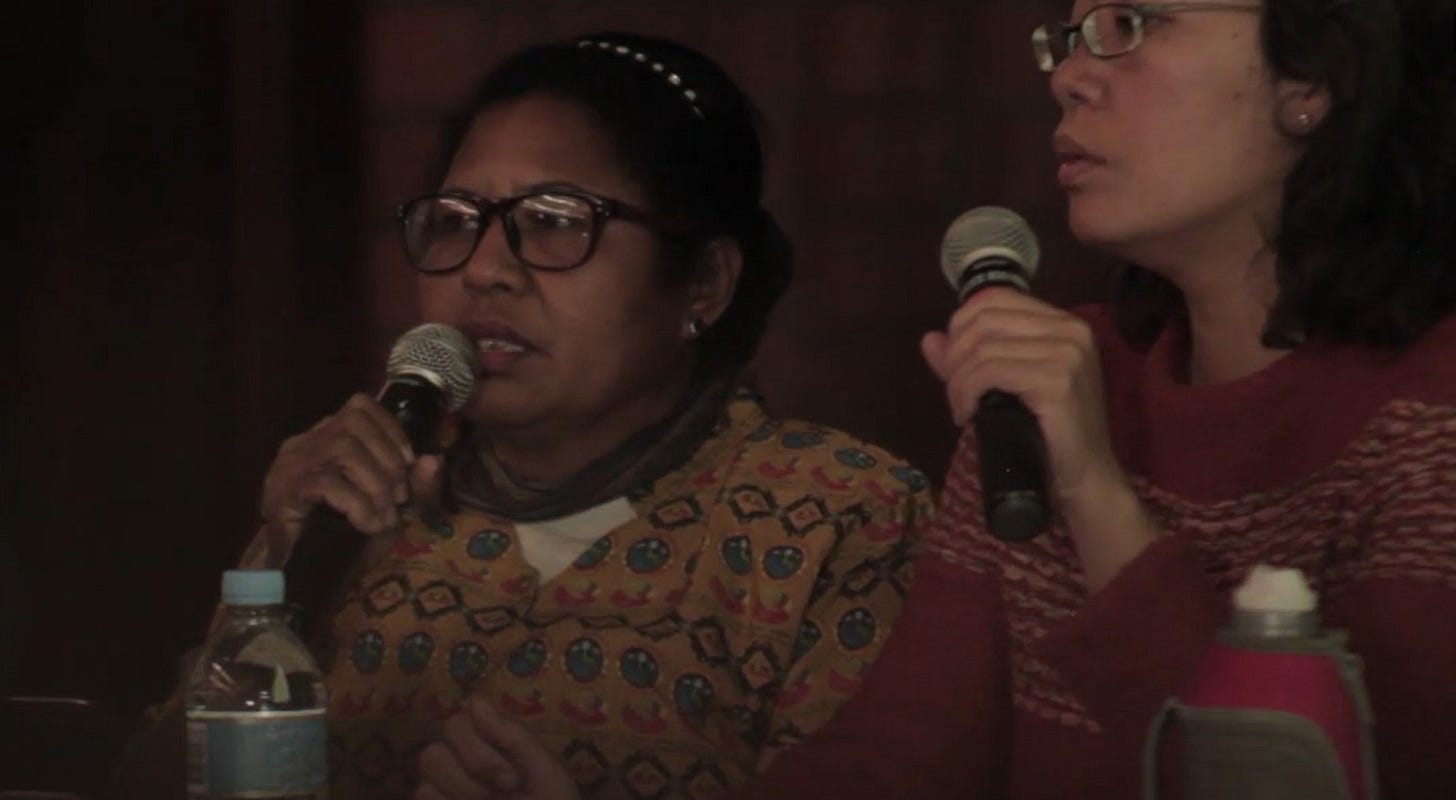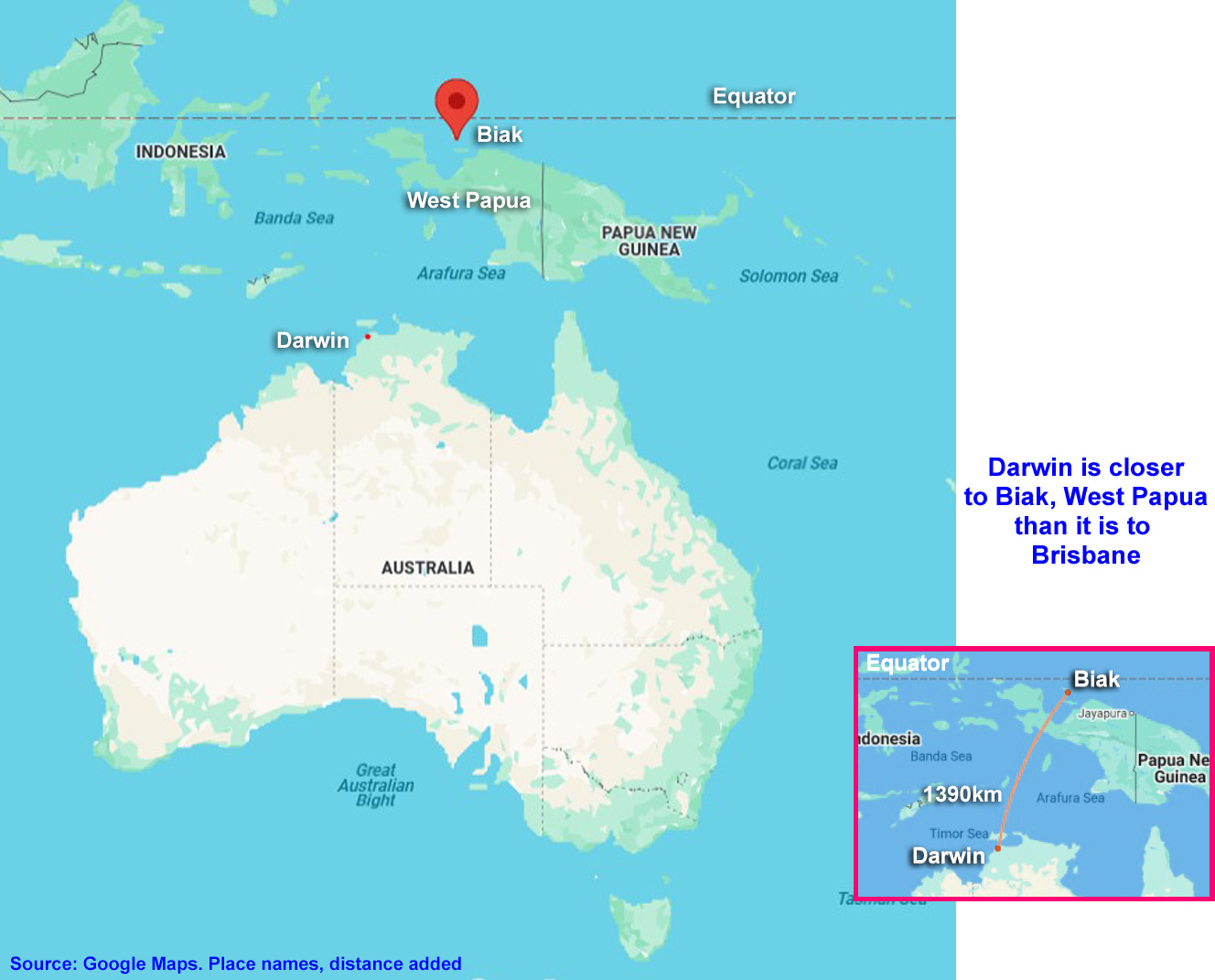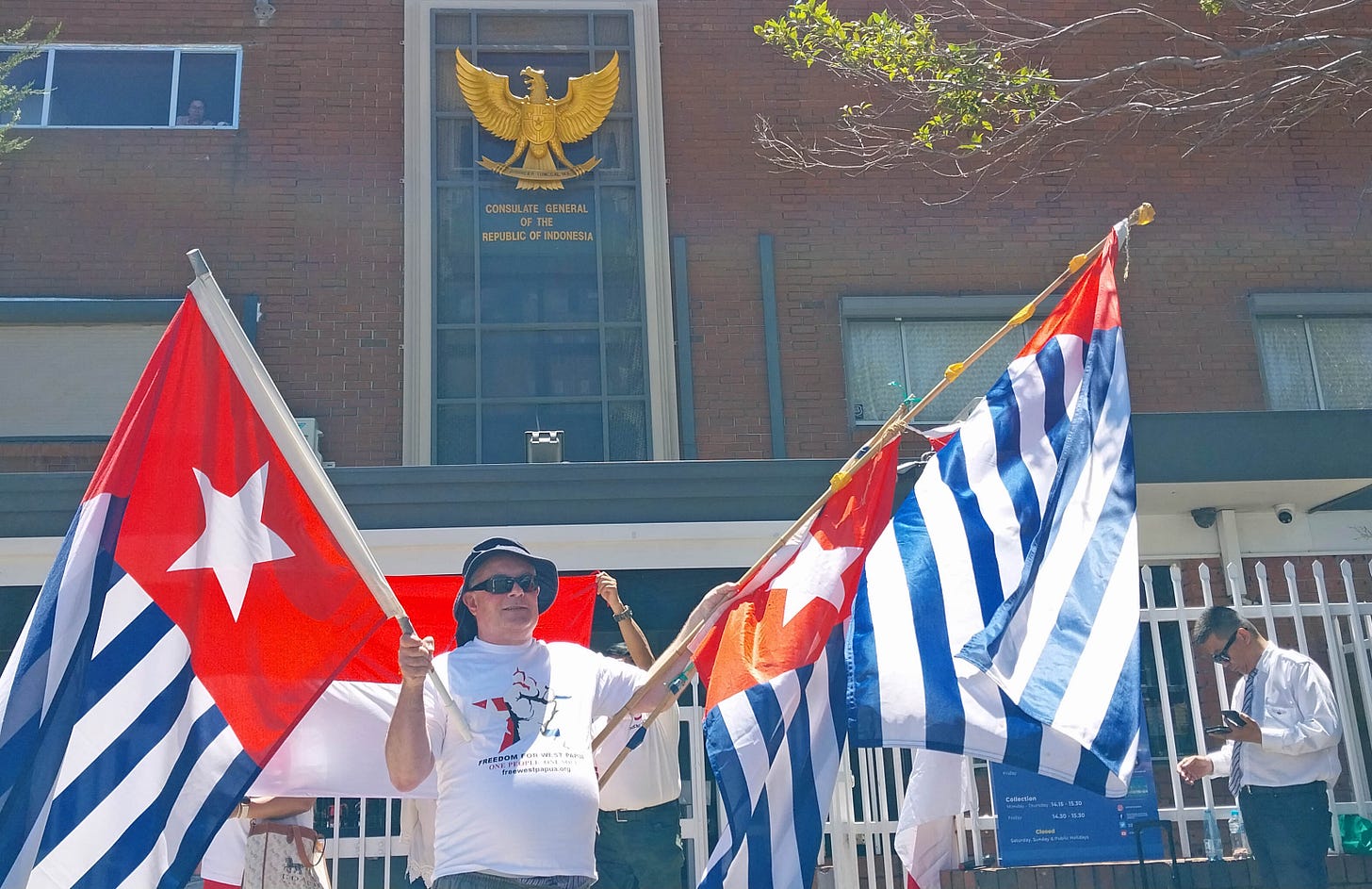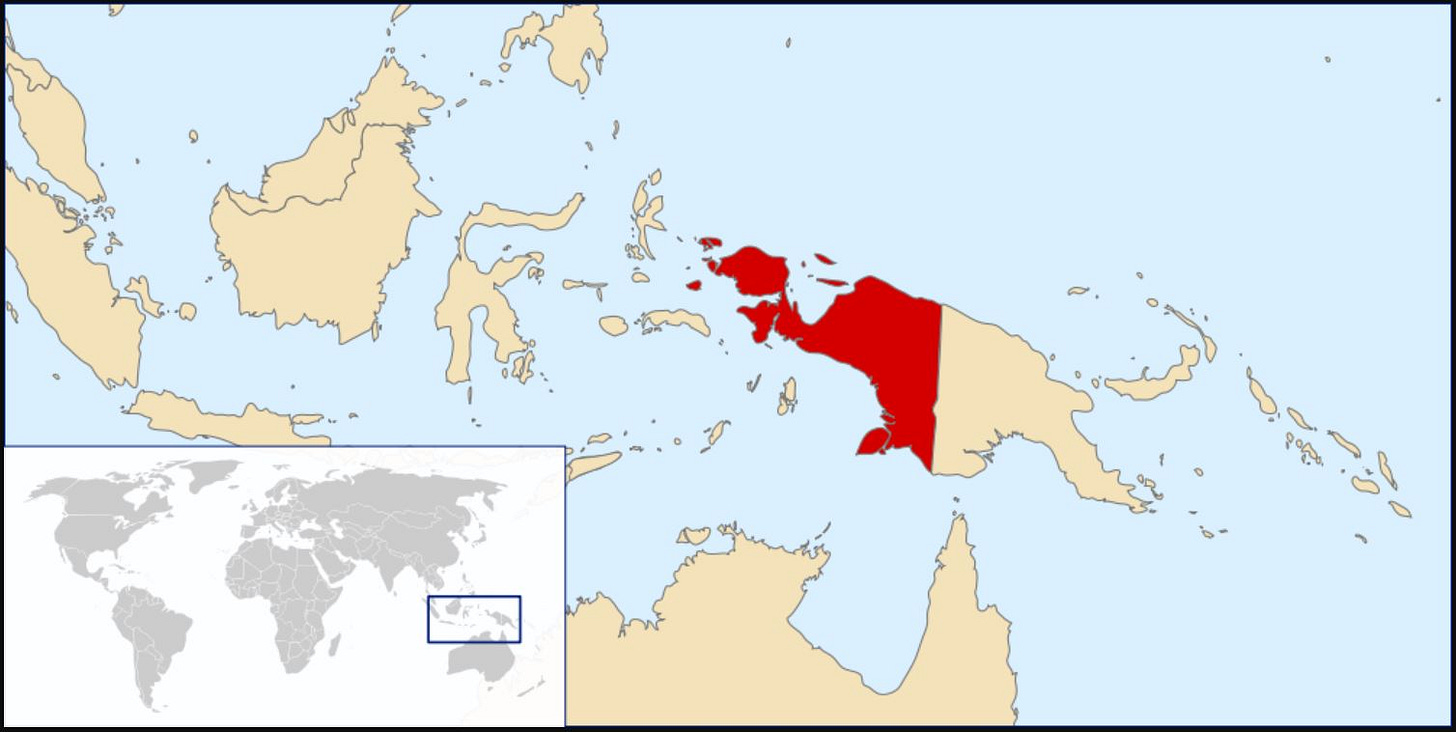Biak Massacre: today marks the most sexually sadistic Indonesian massacre of West Papuans on record, and nobody went to jail
Indonesian President Prabowo Subianto, a former army general accused of war crimes, has also reinstated "transmigrasi" the migration genocide
WARNING: This story contains descriptions of disturbing sexual violence, which is necessary to bear witness to history.
Today, July 6, is Biak Massacre day, marking one of the most sadistically violent Indonesian atrocities during its ongoing occupation of West Papua.
The tiny island of Biak lies south of the equator and north of Australia. It is closer to Darwin than Darwin is to Brisbane.
The West Papuans who live there are our neighbours and friends. They are predominantly Melanesian Christians who share identity with their brothers and sisters in neighbouring Papuan New Guinea, and the Pacific Island nations.
Indonesia, whose population is predominantly Malay Muslim, invaded West Papua in the 1960s, immediately after the Netherlands had granted it full independence from colonial rule.
Indonesia, also a former Dutch colony, immediately began colonising West Papua with transmigrasi, a policy used to ship in impoverished migrants, mainly Javanese Muslims loyal to Indonesia.
Jakarta took full control by 1964, but their occupation is hostile and enforced at gunpoint.
The Morningstar flag of independent West Papua is banned as a separatist symbol, with any who raise it imprisoned for up to 25 years.
In the lead-up to the July 1998 Biak Massacre, villagers had hoisted a Morningstar on top of a water tower.
It was flying high with hope.
Rumours had circulated that then-US President Bill Clinton had officially recognised West Papua’s independence, ABC Radio National reports.
If the rumours did circulate, they were untrue - but the villagers were celebrating, and from July 2 people started gathering under the water tower, singing songs and dancing.
At times more than 500 people were rejoicing under the flag.
On the morning of July 6, in the rain just before dawn, the Indonesian military surrounded the unarmed villagers and attacked.
Bullets were flying from all sides in the mayhem.
It is not known how many people died at the water tower, but soldiers kept shooting at the injured and those cowering on the ground. The dead were loaded into a container truck and never seen again.
Survivors fled in a panic, hiding in homes or in the forest and were shot as they ran.
The captured and the injured were herded to the docks where they were forced at gunpoint onto two Indonesian naval vessels.
MASS RAPE AND TORTURE
Women and girls were raped. Some had their breasts cut off while others had lit candles inserted into their private parts during a depraved and sexually sadistic orgy of violence for which nobody has ever been brought to justice.
Scores of bodies were dumped at sea, later washing up, mutilated and with signs of torture, on the shore.
Indonesia denied the massacre saying a tsunami 11 days after the massacre in Aitape, PNG, 1000km away, was to blame.
Leading Australian jurists held a formal inquiry to establish the facts at a 2014 Citizen’s Tribunal in Sydney, calling witnesses to testify and evaluating evidence. The record is held online here.
“They (the military) formed a letter U around us and then shot at us repeatedly while we were still under the water tower. They kept shooting, telling us to head down to the dock,” said one eyewitness in testimony heard by the Biak Massacre Citizen’s Tribunal.
Victim Tineke Rumakabu gave horrifying testimony to the Biak Massacre Citizen’s tribunal of what she saw after the water tower shootings.

Tineke was caught by the military who tied her hands behind her back, blindfolded her and threw her in a truck with her friends, who were bleeding and screaming for God to help them.
Tineke was among 12 women taken to an office where they were tortured and hit with weapons. The military told them to take off their clothes.
They cut Tineke’s forearm with a sharp knife, burned it with a cigarette, and poured acid on it.
“When I screamed they burned me with cigarettes on both hands. I also heard my friends who were screaming. They said ‘we don’t want to be raped’,” she told the Tribunal through an interpreter.
They took the blindfold from Tineke’s eyes and told her: “look, your friends are being tortured.”
The officials opened wide the legs of the women, she said, and brought candles. They lit the candles and raped the women with the burning candles. Tineke said her friend Martha was tortured with the candle then stabbed in the chest with a bayonet.
MY FRIEND WAS RAPED AND BEHEADED
Martha screamed that they’d better kill her if they raped her, so they stabbed her vagina with the bayonet, cut off her breasts and beheaded her, all in front of Tineke, who was terrified.
Tineke was then tortured, raped and had a lit candle put inside her, too.
She said a soldier brought out a shaving razor and told the women he would cut off their vaginas from top to bottom and from left to right.
There is an Islamic element to this torture as female genital mutilation (also called female circumcision) is widely practised in the Islamic world but is not done by Christian West Papuans.
Tineke saw a young girl raped to death, women circumcised and another woman had her breasts cut off with a bayonet.
Eight of the 12 women were killed in that room, Tineke said. The four survivors were eventually allowed to escape, naked and wounded.
“Just run,” their captor told them.
“We ran across the street, we were so confused.”
A Christian husband and wife in a house across the street took them in, gave them tea and clothes and prayed with them.
FORCED TO DIG THEIR OWN GRAVES
One witness who collected evidence of previous Indonesian military abuses told human rights investigator Eben Kirksey that almost all the mothers in West Biak had been raped.
“They said when the troops came to the villages they didn’t go to the forest to shoot at people, they ordered the villagers to dig holes. Then they gathered all the men, shot them, and put them in the hole. The women were raped. In other villages the military came and raped wives in front of their own husbands. Husbands sat and watched while the soldiers raped their daughters and wives. Even elderly women were raped, 60 and 70 year old women were raped,” she said in written evidence hosted by the tribunal.
“Maybe one of you can talk about the navy ship during the massacre [on July 6th, 1998], about how women had their breasts and genitals cut. We didn’t know who they were. We only know that they were our friends and they were taken and never came back again.”
Another woman who was put on the Indonesian warship managed to survive after a soldier from South Sulawesi let her jump off the back of the ship.
In her testimony, she described how her friend was raped in front of her.
“She just told me to find her family if I made it. They beat her, but she refused to tell them anything—her family name, where her parents lived—she did not tell. There were many people on the ship. I wanted to help them, but how could I? I could not help them. I just jumped into the ocean to save myself … There were children on board the ship. They were begging for help. But how could I help. I just looked at them.”
The victims included children in their school uniforms, their bodies later washing up.
For days after, Indonesian police and military hunted people house to house, demanding information and beating people, witnesses said.
After considering the evidence and witness testimony, the Tribunal’s verdict confirmed the massacre had happened and that Indonesia had downplayed it.
“A large number of men, women and children were killed, tortured and mutilated with some of the women and girls being raped and sexually mutilated and some of those detained died as a result of the actions of the military forces and police,” the verdict said.
West Papuan independence leaders estimate more than 100 people were killed in the massacre and the days following, but nobody really knows.
The Tribunal recommended the evidence be presented to the US and Australian governments who train the Indonesian military so that they might pressure Indonesia to prosecute.
That was in 2014.
Nobody has been prosecuted in the 27 years since the massacre.
Instead, Indonesia has voted in a former army general accused of war crimes as its new president.
President Prabowo Subianto is also the son-in-law of Indonesia’s former dictator General Suharto who ruled Indonesia from 1967 until 1998 when he was ousted from power during widespread riots following the Asian financial crisis.
MIGRATION GENOCIDE
Prabowo has immediately reinstated the policy of migration genocide, transmigrasi.
In 1961, West Papua had a population of 700,000 Austronesian Christians and animists, according to declassified CIA research.
West Papua now has a population of about 5.6 million, of which about 50 percent are migrants, according to the human rights group, International Work Group for Indigenous Affairs.
Indonesia’s majority Muslim population has almost tripled in the last 60 years, from 97 million in the 1961 census to 269.6 million people projected by the 2020 census held by Statistics Indonesia.
Human rights observers say violence has increased with Indonesia now using drones to hunt West Papuan separatists.
On May 14 Indonesian soldiers killed 18 people in another bout of unrest, as Radio NZ reports.
Indonesia claims they were all West Papua National Liberation Army (TPNPB) soldiers, but the separatists said only three of their fighters were killed while the rest were civilians including a 75-year-old, two women and a child.
The transmigrasi program has seen indigenous land given to Indonesian settlers and companies that have destroyed the virgin forests with palm-oil plantations, turning self-sufficient villagers into impoverished workers on their former lands, Jacobin reports.
The first stage of transmigrasi, the Trans Tuntas (T2) program to provide legal certainty on land rights in transmigration areas, was launched by Minister of Transmigration Muhammad Iftitah Sulaiman Suryanagara in June, according to Indonesian news agency Antara.
Australia West Papua Association (Sydney) spokesman Joe Collins said the human rights situation in West Papua was still deteriorating, 27 years after the Biak Massacre.
“West Papuan people continue to be arrested, intimated and killed by the security forces,” he said in a statement on Saturday.
AUSTRALIA DOES NOTHING
The Albanese Government, keen for Indonesia’s help against China, is doing what Australia always does: turning a blind eye and conducting joint regional military drills.
Australia should never allow Gazans to resettle here, but instead should accept the West Papuans, our closest neighbours in trouble.
Not only does Canberra not care, Australia has signed a formal treaty with Indonesia, the Lombok Treaty, which vows never to allow any person to use Australian territory to “encourage” separatism. That means not supporting dissidents who try to take refuge here.
That is why Australia will continue to heap injustice on our occupied northern neighbour.
Please share this story if you liked it, anyone is free to use, it is in the public interest, please attribute as: by Alison Bevege, Letters From Australia.
Visit me on Twitter/X at LettersFromOz











[Australia should never allow Gazans to resettle here, but instead should accept the West Papuans, our closest neighbours in trouble.]
100%
Thank you for not letting this atrocity slip into the memory hole of history.
Maybe all those keffiyeh wearing idiots protesting weekly should look at this - but they won't, and we all know why.
That is just a horrifying story and it's disgusting that Australia has done nothing. How are these soldiers so barbaric. No conscience no anything just hate.